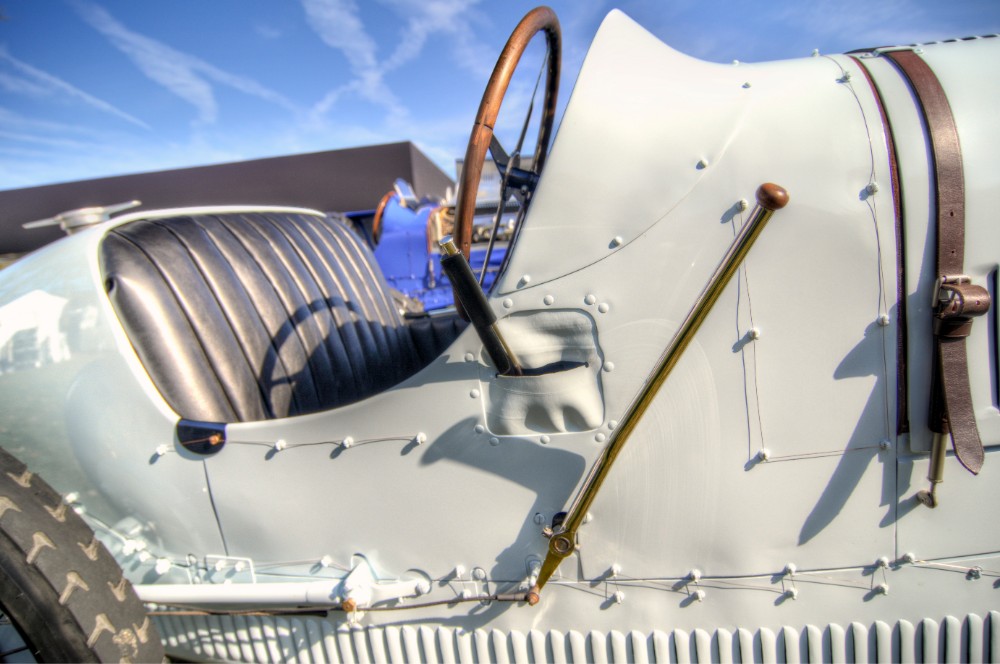
This 1926 Bugatti Type 37 is one of three prototypes built in October of 1925. It was intended to replace the Type 35 and this was no easy task as it had won over 1,000 races in its time. It took the Grand Prix World Championship in 1926, after winning 351 races and setting 47 records in the two prior years. At its height, the Type 35 averaged 14 race wins per week. Bugatti won the Targa Florio five consecutive years from 1925 through 1929. The type 35 chassis and body were reused on the type 37. It was fitted with a new 1.5 liter straight four-cylinder engine. This engine was a SOHC three-valve design and produced 60 hp. 290 Type 37s were built. This car was found in a basement in West Virginia after sleeping for 50 years.
Design and Features
- Manufacturer: Bugatti, founded by Ettore Bugatti, a French-Italian automobile manufacturer.
- Body Style: Open-top roadster, designed specifically for racing.
- Chassis: The Type 37 utilized a lightweight and robust chassis, optimized for performance and handling on race tracks.
- Interior: Spartan cockpit focused on the essentials for racing, typically featuring a simple layout with basic instrumentation and controls.
Performance
- Engine: Inline-4 engine, initially a 1.5-liter (1496 cc) unit, later upgraded to a 1.9-liter (1847 cc) version.
- Power Output: Approximately 60-80 horsepower, depending on the engine variant and tuning.
- Transmission: 4-speed manual gearbox, designed for quick gear changes necessary in racing.
- Top Speed: Capable of achieving speeds exceeding 120 km/h (75 mph), impressive for its era.
- Suspension: The Type 37 featured a solid front axle with semi-elliptic leaf springs and a live rear axle with reversed quarter-elliptic leaf springs.
- Brakes: Cable-operated drum brakes, effective for the time but requiring strong pedal pressure.
Racing Success and Legacy
- Competition History: The Type 37 achieved notable success in various racing events, including Grand Prix races and hill climbs during the late 1920s and early 1930s.
- Significance: It was renowned for its agility, reliability, and competitive performance on both track and road circuits.
- Influence: The Type 37 contributed to Bugatti's reputation for building successful and technologically advanced racing cars, laying the foundation for future Bugatti models.
Production and Legacy
- Production Years: 1926-1930.
- Total Units Produced: Approximately 290 units in various body styles, including race cars and some adapted for road use.
- Price: The Type 37 was positioned as a high-performance racing car, commanding a premium price relative to contemporary vehicles.
Notable Features
- Distinctive Design: The Type 37's sleek, aerodynamic bodywork and signature Bugatti grille made it instantly recognizable on the race track.
- Engineering Excellence: Known for its advanced engineering, including lightweight construction, advanced suspension for its time, and efficient engine design.
- Collector's Item: Today, the Bugatti Type 37 is highly sought-after by collectors and enthusiasts, prized for its historical significance, racing pedigree, and rarity.
You may purchase a print of the 1926 Bugatti Type 37 in our dElegance 2017 online gallery.
The Vintage Automobile Article Index



